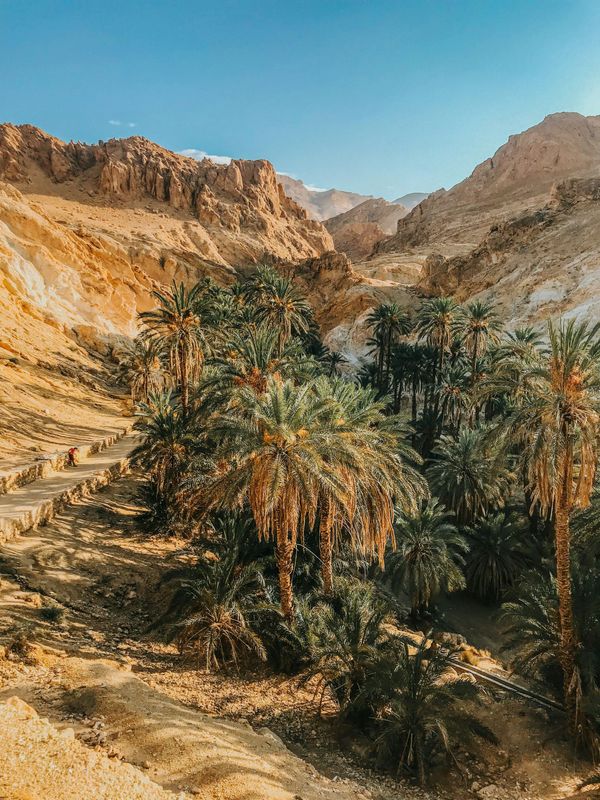On ‘Global Warming in Local Discourses: How Communities around the World Make Sense of Climate Change’
By Domenic Rotundo
What we hear about climate change is influenced by science, politics, the media, and NGOs—but what about local communities, where its effects might arguably be observed most clearly, not least during the past year, when we have all travelled far less? Global Warming in Local Discourses: How Communities around the World Make Sense of Climate Change examines an impressive range of case studies from across the globe, granting great insight into the processes by which we make sense of climate change, and challenging certain expectations or assumptions. In taking a multi-pronged approach to this topic, we gain a varied perspective on the means by which climate change and its effects are transmitted and interpreted in local communities.
The first chapter, “We are Climate Change: Climate Debates Between Transnational and Local Discourses” (Michael Brüggemann and Simone Rödder), includes a concise description of what you will find in this thought-provoking book: “Local discourses around the world draw on multiple resources to make sense of a ‘travelling idea’ such as climate change, including direct experiences of extreme weather, mediated reports, educational NGO activities, and pre-existing values and belief systems.” Chapter One discusses the link between humans (society) and ‘nature’, including anthropogenic global warming (how the physical environment influences social realities), which affects how people perceive their physical surroundings and live (which, in turn, impacts the climate). The question of why it is important to study how local communities make sense of climate change is also answered:
Interpretations of climate change, such as those that stress individual and collective efficacy (the belief that ‘we can make a difference’), may motivate people to change their lifestyles and, more importantly, mobilize political action, while feelings of fear and shock may overwhelm, paralyze actions or lead to risk denial (O'Neill and Nicholson-Cole 2009; Feldman and Hart 2015).
The chapter considers key factors, such as transnational and local discourses or scientific and other ways of sense-making. Three dimensions of climate change discourse are also examined: “patterns of communication related to climate change”; “patterns of interpretation about climate change that emerge from the different flows of communication”; and “entanglement of meanings originating at the local or transnational level including how the scientific and other framings of climate change speak to each other.”
In Chapter Two, “The Case of ‘Costa del Nuuk’: Greenlanders Make Sense of Global Climate Change”, Freja C. Eriksen analyzes social representations theory and the views (mostly ignored by the media) of fifteen Greenlanders on the subject of climate change, taking into account their media exposure and personal experiences. Findings show that these individuals do not self-identify as victims of climate change, contrary to what is largely represented in the media (e.g. through frequent images of melting icebergs). There is also a more positive outlook for a warmer Greenland, including possible political independence and development. The media coverage is criticized by both young and old. ‘Professional background’ influenced whether the interviewees emphasized potential economic benefits (e.g. ice melt: greater accessibility to oil, gas, mining, and hydrocarbon development) or environmental risks of climate change. Older people were less likely to believe that climate change is anthropogenic, and more likely to believe that climate change is exaggerated by the media. On the other hand, the younger interviewees felt that the media underestimates anthropogenic global warming. In closing this chapter, Eriksen explains how sense-making (of climate change) involves six factors: natural/unnatural, certainty/uncertainty, self/other, local/global, positive/negative, and environment/economy, and concludes that personal experience played a critical role.
In Chapter Three, “Communication and Knowledge Transfer on Climate Change in the Philippines”, Thomas Friedrich uses multi-method ethnography to investigate the views of residents of the island of Palawan (which often experiences extreme weather) regarding the fact that it is ‘carbon negative’. Personal experiences, pre-existing knowledge of nature, and cultural practices—such as strong environmentalism—are examined. This chapter explores the top-down direction of communicating the idea of climate change: “from global IPCC [Intergovernmental Panel on Climate Change] knowledge via networks of media and politics to local people with diverse cultural backgrounds and epistemologies” (Brüggemann and Rödder); the contrast between knowledge and meaning of climate change is also considered. The notion of climate change as a “travelling idea” is analyzed, and it is revealed that local educational theatre productions link natural disasters to immoral environmental actions. In Palawan, therefore, climate change is viewed as being real, but this strong environmentalism is due to “pre-existing beliefs, values, and practices” (Brüggemann and Rödder). Sense-making “is a multi-layered process, in which discourses and narratives, cultural models of human-environment relationships, interpersonal communications, personal experiences, and other sources of information (including the media) play a decisive role in how climate change is eventually comprehended and communicated” (Friedrich).
In Chapter Four, “Sense-Making of COP 21 among Rural and City Residents: The Role of Space in Media Reception”, authors Imke Hoppe, Fenja De Silva-Schmidt, Michael Brüggemann, and Dorothee Arlt delve into views regarding the COP 21 climate summit, which ultimately led to the 2015 Paris Agreement. Participants in the study came from both urban (Hamburg) and rural (Otterndorf) locations in Northern Germany. The chapter examines “how space, both as a physical and a social context, influences interpretations of climate change, with a focus on the role media reception plays in the process” (Brüggemann and Rödder). Focus groups, media diaries, and an online panel survey were used; in both locations, media use (local media was criticized by participants) and climate change interpretations were comparable. Personal concern over climate change was higher among rural participants, who were worried about the coastal protection and the future possibility of floods. This study showed that “the longer an individual lives in a place and the more connected he or she feels to it, the more relevant spatial factors become for her or his experience of climate change” (Brüggemann and Rödder). This makes much logical sense, and might indicate that long-term residents of a place will make a greater effort to combat climate change. This idea is certainly echoed by a recent poll (conducted by Opinium in the United Kingdom), whose findings suggest that, contrary to popular belief that millennials are more active in their practical response to climate change than their elders, in fact half of those over 55 shop locally, buy fewer clothes, and make an effort to avoid single-use plastics, whilst just a quarter of those aged between 18 and 34 do the same.
In Chapter Five, “What Does Climate Change Mean to Us, the Maasai? How Climate Change Discourse is Translated in Maasailand, Northern Tanzania”, Sara de Wit, through a multi-sited fourteen-month research project, “studies the ways in which climate change discourse is translated, communicated and received in a rural village in Northern Tanzania, exploring how villagers who have no experience with Western life and whose culture is shaped by religion translate the story of climate change” (Brüggemann and Rödder). Climate change information, which is acquired via mass media (such as the local radio station), NGOs, and the Christian church, conflicts with the culture and religion of the Maasai. For instance, an educational movie clip (Climate Conscious Program), created by a few NGOs, shows that drought is caused by anthropogenic climate change, whereas the Maasai believe that God is responsible for droughts and rain. The people distrust scientists and are unwilling to talk about the future (since they believe that only God knows the future). The Maasai consequently believe that what is viewed as climate change is simply the “normal conditions of life” (Brüggemann and Rödder).
In Chapter Six, “Living on the Frontier: Laypeople’s Perceptions and Communication of Climate Change in the Coastal Region of Bangladesh”, Shameem Mahmud considers the principal sources of information on climate change for the local community, and examines “how it understands climate change in the context of constant exposure to regional geo-hazards such as tropical cyclones, floods, salinity in the water and soil, storms, and coastal erosion” (Brüggemann and Rödder). Interviews of thirty-eight citizens (over half of whom were literate) revealed that they received climate change information from radio, television, NGOs (of which there are 250 in the region), and local leaders. Their processes of sense-making followed two key patterns: the “regional geo-hazard pattern” and “weather and seasonal variance” (which involves personal experiences of changing weather). Interviewees accept that climate change has some responsibility for local problems, such as increased salinity or rising tidal surges, but they also saw local causes, including shrimp aquaculture, as a source of increased salinization.
In the volume’s final chapter, “Extreme Weather Events and Local Impacts of Climate Change: The Scientific Perspective”, Friederike E. L. Otto explains present local climate changes and probable future ones, including newly-advanced research (and limitations) on the connection between extreme weather and climate change: “The chapter translates the question of links between climate change and extreme weather into the scientific language [using world-wide data] of changing probabilities” (Brüggemann and Rödder). The impact of media and public debates on climate science is also conveyed: increased public attention to climate change has led to further development of climate-change science (such as greater methods for estimating changing hazards), as well as a greater volume of critical examinations of scientific studies. Otto discusses attribution science, the effects of a warming climate, and the fact that “a heightened understanding of regional changes in individual types of extreme weather events facilitates preparation for all types of extreme weather.”
For those interested in climate science and how the wide array of information sources (media, politics, NGOs, and science) impact people's opinions and understanding of climate change, and indeed the means by which the idea itself ‘travels’ between global and local contexts, this insightful book will be a great asset.
Global Warming in Local Discourses: How Communities around the World Make Sense of Climate Change, by Michael Brüggemann and Simone Rödder (eds) is an Open Access title available to read and download for free or to purchase in paperback, hardback and various eBook formats here.
Photo by Nico Roicke on Unsplash



